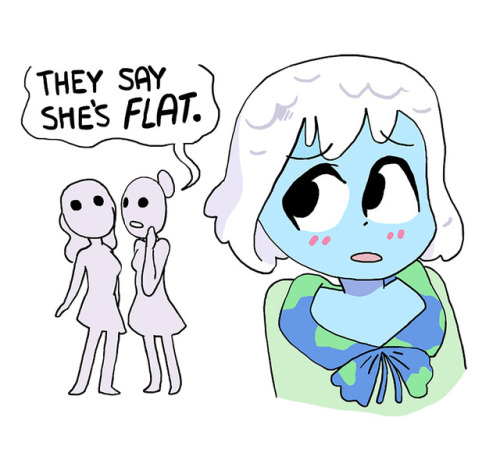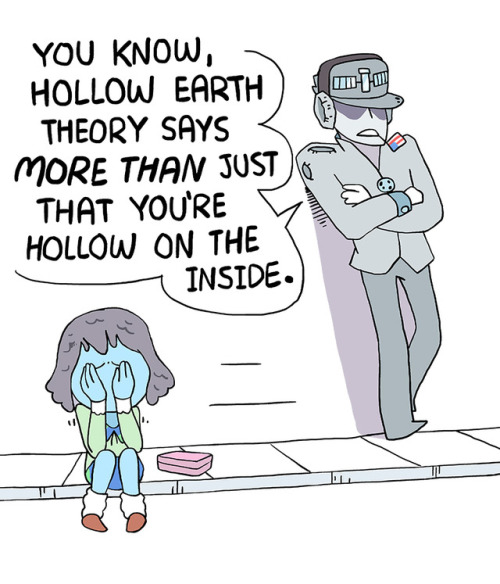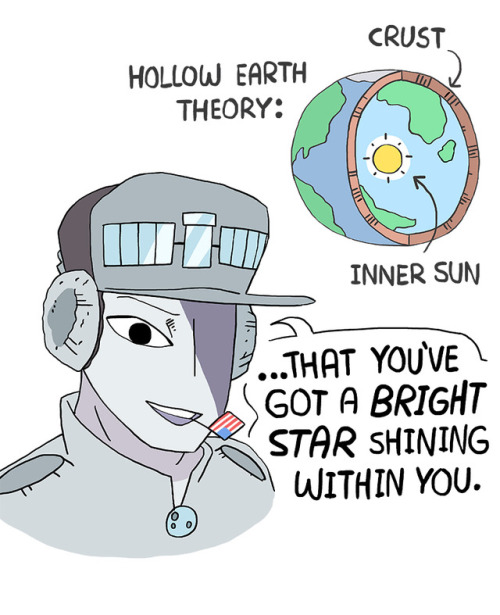I Really Looooove Science. I Love The Scientific Method. I Love The Mindset Science Invokes. Weird Ass
i really looooove science. i love the scientific method. i love the mindset science invokes. weird ass chemistry biophysics and neuroscience and giant gaseous clouds in the universe and fricken volcanoes. just the fact that we know all we know. w o w
More Posts from Plutoisnotaplanet and Others
okay but also the f on the end of one of the words is tiny for some reason rip me and all these technical difficulties.
message from pluto 7
when i printed my “poster” the printer freaked out and ink splattered at the top i am crying 😭
Black holes.....the ultimate succ
10 Times More Galaxies!
The universe suddenly looks a lot more crowded…
We already estimated that there were about 100 billion galaxies in the observable universe, but new research shows that this estimate is at least 10 times too low!

First, what is the observable universe? Well, it is the most distant part of the universe we can see from Earth because, in theory, the light from these objects have had time to reach Earth.

In a new study using surveys taken by the Hubble Space Telescope and other observatories, astronomers came to the surprising conclusion that there are at least 10 times more galaxies in the observable universe than previously thought. This places the universe’s estimated population at, minimally, 2 trillion galaxies!

The results have clear implications for galaxy formation, and also helps shed light on an ancient astronomical paradox – why is the sky dark at night?
Most of these newly discovered galaxies were relatively small and faint, with masses similar to those of the satellite galaxies surrounding the Milky Way.

Using deep-space images from the Hubble Space Telescope and other observatories, astronomers converted the images into 3-D, in order to make accurate measurements of the number of galaxies at different epochs in the universe’s history.
In addition, they used new mathematical models, which allowed them to infer the existence of galaxies that the current generation of telescopes cannot observe. This led to the surprising conclusion that in order for the numbers of galaxies we now see and their masses to add up, there must be a further 90% of galaxies in the observable universe that are too faint and too far away to be seen with present-day telescopes.

The myriad small faint galaxies from the early universe merged over time into the larger galaxies we can now observe.
That means that over 90% of the galaxies in the universe have yet to be studied! In the near future, the James Webb Space Telescope will be able to study these ultra-faint galaxies and give us more information about their existence.

So back to the question…Why is the sky dark at night if the universe contains an infinity of stars? Researchers came to the conclusion that indeed there actually is such an abundance of galaxies that, in principle, every patch in the sky contains part of a galaxy.
However, starlight from the galaxies is invisible to the human eye and most modern telescopes due to other known factors that reduce visible and ultraviolet light in the universe. Those factors are the reddening of light due to the expansion of space, the universe’s dynamic nature, and the absorption of light by intergalactic dust and gas. All combined, this keeps the night sky dark to our vision.
Make sure to follow us on Tumblr for your regular dose of space: http://nasa.tumblr.com
message from pluto (SBE 6)
oh look. another summer break edition of “messages from pluto”. i just wanted to do this since school is like riGHT THERE and this might be the last time i get to do an sbe.
so quick, think of something funny!!! something cool!! oh wait, i know something cool. PLUTO!!! (cuz of ice) (and im 3.67 billion miles from the sun) talk about cool eh

when you just want space memes but the app is garbage

-
 nosleep5sam liked this · 1 year ago
nosleep5sam liked this · 1 year ago -
 laspadasara liked this · 4 years ago
laspadasara liked this · 4 years ago -
 la-cosmonauta-extraterrestre reblogged this · 5 years ago
la-cosmonauta-extraterrestre reblogged this · 5 years ago -
 ikhaldy5s liked this · 5 years ago
ikhaldy5s liked this · 5 years ago -
 peachiana reblogged this · 5 years ago
peachiana reblogged this · 5 years ago -
 peachiana liked this · 5 years ago
peachiana liked this · 5 years ago -
 eddie-munson-dungeon-master liked this · 5 years ago
eddie-munson-dungeon-master liked this · 5 years ago -
 myyearofstressandrelaxation liked this · 5 years ago
myyearofstressandrelaxation liked this · 5 years ago -
 bbh-core liked this · 5 years ago
bbh-core liked this · 5 years ago -
 incelreigen liked this · 5 years ago
incelreigen liked this · 5 years ago -
 kittiesneedlovetoo liked this · 5 years ago
kittiesneedlovetoo liked this · 5 years ago -
 omgxxfakeendxx liked this · 5 years ago
omgxxfakeendxx liked this · 5 years ago -
 5zenox liked this · 5 years ago
5zenox liked this · 5 years ago -
 studying-for-myself reblogged this · 6 years ago
studying-for-myself reblogged this · 6 years ago -
 dankmemesanddepression liked this · 6 years ago
dankmemesanddepression liked this · 6 years ago -
 mountaindisbeliever reblogged this · 6 years ago
mountaindisbeliever reblogged this · 6 years ago -
 pineapplesharks liked this · 6 years ago
pineapplesharks liked this · 6 years ago -
 adezsugarr-blog liked this · 6 years ago
adezsugarr-blog liked this · 6 years ago -
 physics-and-magic liked this · 6 years ago
physics-and-magic liked this · 6 years ago -
 musically--declined reblogged this · 6 years ago
musically--declined reblogged this · 6 years ago -
 backtohogwarts liked this · 6 years ago
backtohogwarts liked this · 6 years ago -
 fcrelsket liked this · 6 years ago
fcrelsket liked this · 6 years ago -
 faery-wraith liked this · 6 years ago
faery-wraith liked this · 6 years ago -
 blondiebirbie reblogged this · 6 years ago
blondiebirbie reblogged this · 6 years ago -
 blondiebirbie liked this · 6 years ago
blondiebirbie liked this · 6 years ago -
 doodlepede liked this · 6 years ago
doodlepede liked this · 6 years ago -
 kanelada reblogged this · 6 years ago
kanelada reblogged this · 6 years ago -
 kanelada liked this · 6 years ago
kanelada liked this · 6 years ago -
 thereallyrealironman liked this · 6 years ago
thereallyrealironman liked this · 6 years ago -
 tiredloserr liked this · 6 years ago
tiredloserr liked this · 6 years ago -
 proudruinerofeverything reblogged this · 6 years ago
proudruinerofeverything reblogged this · 6 years ago -
 proudruinerofeverything liked this · 6 years ago
proudruinerofeverything liked this · 6 years ago -
 boxstara liked this · 6 years ago
boxstara liked this · 6 years ago -
 lukethestudent reblogged this · 6 years ago
lukethestudent reblogged this · 6 years ago -
 lukethestudent liked this · 6 years ago
lukethestudent liked this · 6 years ago -
 alexeishostakoff liked this · 6 years ago
alexeishostakoff liked this · 6 years ago -
 shamelessalmondturtlefish liked this · 6 years ago
shamelessalmondturtlefish liked this · 6 years ago -
 asterisrns liked this · 6 years ago
asterisrns liked this · 6 years ago -
 waum liked this · 6 years ago
waum liked this · 6 years ago -
 knightoftheshoreline liked this · 6 years ago
knightoftheshoreline liked this · 6 years ago -
 scorpioman13 liked this · 6 years ago
scorpioman13 liked this · 6 years ago -
 lemonwel liked this · 6 years ago
lemonwel liked this · 6 years ago
welcome to my space space (see what i did there) (space means two different things)
232 posts









